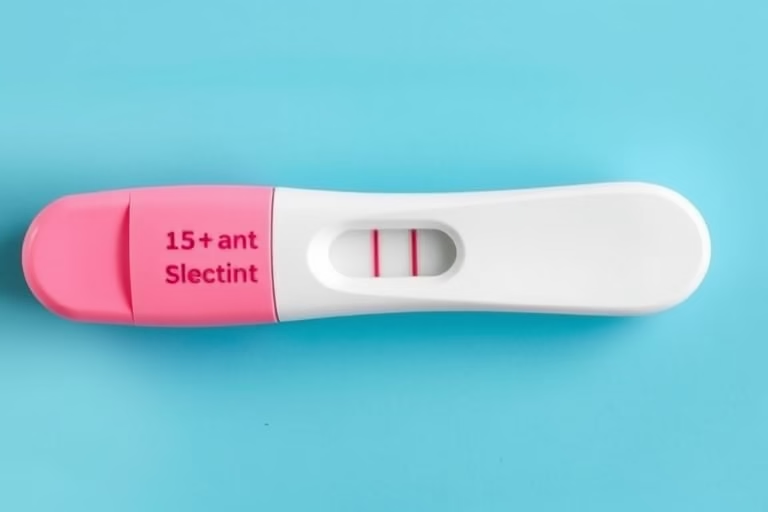Understanding Pregnancy Tests and Implantation Bleeding
The topic of pregnancy tests combined with the phenomenon of implantation bleeding is essential for individuals trying to conceive or those who suspect they are pregnant. Implantation bleeding occurs when a fertilized egg attaches to the uterus, usually around the time of a missed period. Some women may notice a small amount of spotting during this process, which can lead to confusion regarding their pregnancy status.
A pregnancy test is designed to detect the hormone human chorionic gonadotropin (hCG), which is produced after implantation occurs. Timing is crucial because testing too early might result in a false negative, as hCG levels need time to rise. Recognizing the signs of implantation bleeding and understanding when to take a pregnancy test can help individuals make informed decisions regarding their reproductive health.
What is Implantation Bleeding?
Implantation bleeding refers to light spotting that occurs when a fertilized egg implants into the lining of the uterus. Unlike traditional menstruation, which involves heavier bleeding, implantation bleeding is usually light pink or brown and lasts only a few hours to a couple of days. Understanding the characteristics of implantation bleeding is crucial for anyone who is trying to conceive.
Typically, implantation bleeding occurs approximately 6 to 12 days post-ovulation. This timing can vary based on the individual’s cycle, and not every woman experiences this symptom. Some may confuse it with their period or other forms of spotting, making understanding the differences vital.
Some signs to distinguish between regular menstruation and implantation bleeding include:
Since confusion can arise, knowing these differences may help in identifying potential pregnancy.
When to Take a Pregnancy Test After Implantation Bleeding
Timing when to take a pregnancy test in relation to implantation bleeding is crucial to ensure accurate results. After implantation occurs, it typically takes several days for hCG levels to rise sufficiently to be detected by a home pregnancy test.
Experts recommend waiting at least one week after suspected implantation bleeding before taking a home pregnancy test. Testing too early may lead to a false negative, thus causing unnecessary stress and confusion. Since each woman’s cycle is unique, tracking ovulation and period could provide a clearer picture.
Here is a suggested timeline:
- Track menstrual cycles to identify ovulation days.
- If you experience implantation bleeding, wait about a week.
- Take the pregnancy test first thing in the morning for the most accurate reading.
By adhering to this timeline, individuals can increase the chances of accurately confirming pregnancy.
Common Symptoms of Pregnancy
Alongside implantation bleeding, other symptoms often indicate pregnancy. Recognizing these can help distinguish potential pregnancy signs from PMS or other conditions.
Common symptoms include:
Understanding these symptoms helps in making informed decisions. However, it is essential to remember that not every woman will experience all these symptoms, and their intensity may vary significantly.
How to Interpret Pregnancy Test Results
Understanding how to interpret the results of a home pregnancy test is vital. Home tests can provide either a positive or negative result based on the presence of hCG. Here’s how to interpret results effectively:
Follow these guidelines:
- Read the instructions thoroughly, as brands may vary.
- Check the control line to ensure the test is working properly.
- If a second line appears (even faint), it usually indicates pregnancy.
- If no lines appear or only one line shows up, the test is likely negative.
- Repeat the test if you have doubts or if your period does not arrive within a few days.
Incorrect interpretation may lead to confusion, so patience is crucial.
What Causes False Negatives in Pregnancy Tests?
False negatives are a common concern when taking pregnancy tests. Various factors can contribute to obtaining inaccurate results. Understanding these factors may help in achieving more reliable outcomes.
Some primary reasons for false negatives include:
By being aware of these reasons, individuals can reduce the chances of encountering false negatives.
Can Implantation Bleeding Be a Sign of Other Conditions?
Implantation bleeding is often initially assumed to be a sign of pregnancy; however, it can be confused with other conditions. Understanding alternative causes is crucial for women’s health.
Some other common reasons for spotting can include:
Consulting with a healthcare provider is vital for a proper diagnosis and recommendations regarding further actions.
Final Thoughts
The topic of pregnancy tests and implantation bleeding is important for anyone trying to conceive or trying to understand their body. Recognizing what implantation bleeding is and when to take a pregnancy test can significantly affect the outcome regarding pregnancy decisions. Also, knowing how to interpret test results and being aware of false negatives can focus individuals on their next steps.
It is fundamental to remember that every woman’s body operates differently, and understanding your unique cycle can help in interpreting signs and symptoms accurately. If confusion persists or if symptoms are unusual, consulting with a healthcare professional is always best. Routine follow-ups can help ensure reproductive health is being monitored consistently.
Understanding the factors contributing to false negatives and being aware of other conditions can help break down barriers surrounding reproductive health. Remember that remaining informed can lead to better outcomes.
Frequently Asked Questions
1. How long after implantation bleeding can I take a pregnancy test?
It is advisable to wait about a week after experiencing implantation bleeding to take a pregnancy test for the most accurate result.
2. What does implantation bleeding look like?
Implantation bleeding is typically light pink or brown and lasts fewer days than a regular period, usually only a few hours to two days.
3. Can I still be pregnant if I have implantation bleeding?
Yes, implantation bleeding can be an early sign of pregnancy. It occurs when the fertilized egg attaches to the uterine lining.
4. Is spotting during early pregnancy normal?
Many women experience spotting, including implantation bleeding. However, if spotting is significant or accompanied by pain, medical advice is recommended.
5. Can stress affect my menstrual cycle and lead to spotting?
Yes, stress can impact hormonal levels, resulting in spotting or irregular menstrual cycles. Managing stress is essential for overall reproductive health.
Further Reading
What Type of Psychotherapy Is Best for Anxiety?







